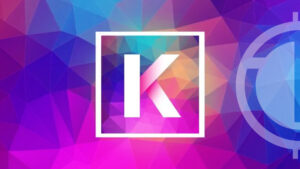
There are many cryptocurrencies in the market. To simply get an idea of how many of these digital coins currently exist, you can just take a look at the long lists of cryptos on the crypto market tracking websites CoinMarketCap and CoinGecko.
Given the long list of cryptos currently in the market, it is fair to say that not all of them are projects of value. One key thing to look out for when looking at which projects to focus on is their respective daily trading volumes, as this shows how actively traded they are every day.
This article will take a look at the top 10 cryptos by trading volume, and discuss what each of these projects are.
What Is CoinGecko?
CoinGecko is one of the go-to sites for live crypto price listings, and has been operating since 2014. The platform also welcomes new crypto users to the community with educational content, yield gain calculations, as well as interactive giveaways.
The platform can be accessed through its website or its mobile app, and aggregates all of the information regarding the performance of the majority of cryptos available in the market. Using real-time feeds, CoinGecko displays price information, trading volume, and price fluctuations over periods from 1 hour, to one week, to as far back as the information will allow.
Furthermore, this crypto tracking platform is one of the most useful tools available to crypto traders and investors, since it acts as a hub for reliable information relating to more than 6,000 crypto assets.
The platform also displays the contract addresses for crypto assets, which is particularly useful when purchasing Ethereum-based, ERC-20 tokens from decentralized exchanges (DEXs) such as Uniswap. Using CoinGecko, you can easily import the contract address for newly purchased tokens into a MetaMask wallet.
What Is a Cryptocurrency?
A cryptocurrency, or crypto for short, is a digital currency that is secured by advanced cryptography – making it nearly impossible to counterfeit or double-spend. Many of the cryptos currently in the market are decentralized networks that are based off of blockchain technology, which is a distributed ledger enforced by a disparate network of computers.
Cryptos can be mined or purchased from cryptocurrency exchanges. Unfortunately, not all e-commerce sites allow purchases using cryptos. As a matter of fact, cryptos, even popular ones such as Bitcoin (BTC), are hardly accepted for retail transactions.
What Is a Stablecoin?
Stablecoins are cryptos whose value is pegged or tied to that of another currency, commodity or financial instrument. The main aim of stablecoins is to provide an alternative to the high volatility of the most popular cryptocurrencies such as BTC, which has made such investments less suitable for wide use in transactions.
Cryptos are known for their price volatility, among other things, which is great for traders but not ideal for routine transactions like purchases – turning these routing purchases into a risky speculation for the buyer and seller.
Types of Stablecoins
Fiat-Collateralized Stablecoins
This type of stablecoin maintains a reserve of fiat currency or currencies such as the U.S. dollar, ensuring the stablecoin’s value. Other forms of collateral for these types of stablecoins can include precious metals like gold or silver as well as commodities such as crude oil. However, the majority of fiat-collateralized stablecoins have their reserves in U.S. dollars.
These reserves are maintained by independent custodians and are regularly audited. Tether (USDT) and TrueUSD (TUSD) are popular stablecoins that are backed by U.S. dollar reserves and denominated at parity to the dollar.
Crypto-Collateralized Stablecoins
Crypto-collateralized stablecoins are backed by other cryptos. Since the reserve crypto may also be prone to high volatility, these types of stablecoins are over-collateralized. This means that the value of a cryptocurrency held in reserves exceeds the value of the stablecoins issued.
A crypto worth $2 million might be held as reserve to issue $1 million in a crypto-backed stablecoin. This acts as an insurance against a 50% decline in the price of the reserve cryptocurrency.
Algorithmic Stablecoins
Algorithmic stablecoins may or may not hold reserve assets. Their primary distinction is the strategy of keeping the stablecoin’s value stable by controlling its supply through an algorithm, which is essentially a computer program running a preset formula.
In some ways, an algorithmic stablecoin is not so different from central banks, which are also not dependent on a reserve asset to keep the value of the currency they issue stable.The main difference is that a central bank like the Federal Reserve sets monetary policy publicly based on well understood parameters.
Furthermore, a central bank’s status as the issuer of legal tender does wonders for the credibility of its monetary policy. Algorithmic stablecoin issuers can’t fall back on such advantages in a crisis.
Top 10 Cryptocurrencies By Volume
The list below is based on the 24 hour trading volumes at the time of writing an as seen on the crypto market tracking website, CoinGecko.
Tether (USDT)
First on the list is the stablecoin Tether, which is a cryptocurrency pegged to the U.S. dollar. According to Tether’s website, USDT is backed “100% by Tether’s reserves”. Tether is owned by iFinex, which is the Hong Kong registered company that also owns the crypto exchange BitFinex.
Tether was originally launched as RealCoin in July of 2014 and was rebranded to Tether in November 2014. It then started trading in February of 2015.
Originally based on the Bitcoin blockchain, Tether now supports Bitcoin’s Omni and Liquid protocols as well as the Ethereum, EOS, TRON, Solana, Algorand, OMG Network, as well as Bitcoin Cash blockchains.
At the time of writing, the 24-hour trading volume of USDT is approximately $45,917,201,294. Tether is also the third biggest cryptocurrency by market cap, behind Bitcoin (BTC) and Ethereum (ETH), with a market cap of around $67.55 billion.
Bitcoin (BTC)
Bitcoin is the first crypto that made its way to the market and set the blueprint for the rest of the cryptos that would follow. First introduced to the public in 2009 by an anonymous developer or group of developers using the name Satoshi Nakamoto, Bitcoin has since become the most well-known crypto in the world.
Bitcoin is also the largest crypto by market cap with a market cap of around $436.07 billion. At the time of writing, the 24 hour trading volume for BTC is $22,635,823,622 according to CoinGecko.
Ethereum (ETH)
Ethereum is a decentralized global software platform that is powered by blockchain technology, and it is most commonly known for its native crypto, ether (ETH). Anyone can use the Ethereum platform to create any secured digital technology.
Ethereum has a token designed for use in the blockchain network, which can also be used by participants as a method to pay for work done on the blockchain.
The Ethereum platform is designed to be scalable, programmable, secure, and decentralized, and has become a blockchain of choice for developers and enterprises that want to create decentralized applications, also known as dApps.
One key feature of the Ethereum blockchain is that it natively supports smart contracts. These smart contracts are the essential tools behind decentralized applications, and many decentralized finance (DeFi) and other applications employ smart contracts in conjunction with blockchain technology.
At the time of writing, the 24 hour trading volume for Ethereum is $14,515,829,265 and is the second biggest crypto by market cap, with a market cap of approximately $221.52 billion.
USD Coin (USDC)
USD Coin is another digital currency that is fully backed by U.S. dollar assets, and is a tokenized U.S. dollar with the value of one USDC coin having a 1:1 relationship to the value of the U.S. dollar. The value of USDC is designed to remain stable, therefore making USDC a stablecoin.
Although it may sound like it is given its name, it is important to note that USDC is not issued or backed by the U.S. government. USDC is an open-source project, so anyone can view and contribute to the project’s source code.
USDC’s reserve assets are held in segregated accounts with regulated U.S. financial institutions. The accounting firm, Grant Thornton, oversees these segregated accounts and provides monthly attestation reports.
USDC maintains its 1:1 peg with the U.S. dollar by minting the same amount of USDC is minted when a fiat dollar amount is deposited into the accounts, and USDC is burned when USDC is sold for the fiat Dollar.
At the time of writing, USDC has a 24 hour trading volume $5,646,200,022 and is the second biggest stablecoin by market cap and the fourth biggest crypto by market cap, right behind its main competitor, Tether (USDT). USDC has a market cap of $52.85 billion.
Binance USD (BUSD)
Binance USD is a stablecoin issued by the largest crypto exchange platform, Binance, and is a 1:1 USD-backed stablecoin. The stablecoin is issued by Binance in partnership with Paxos, and is approved and regulated by the New York State Department of Financial Services (NYDFS). Anyone can view the BUSD Monthly Audit Report on the official website.
The stablecoin was launched on the 5th of September 2019, and aims to meld the stability of the dollar through the utilization of blockchain technology. It is a digital fiat currency that is issued as an ERC-20 token and also supports the BEP-20 protocol.
At the time of writing, Binance USD is the third largest stablecoin behind Tether and USD Coin, with a market cap of $18.54 billion. Binance USD also has a 24 hour trading volume of $5,518,553,460.
Ripple (XRP)
Ripple is a technology that acts as both a crypto and a digital payment network to facilitate financial transactions. The coin made its way to the public domain in 2012 and was co-founded by Chris Larsen and Jed McCaleb.
The main purpose for Ripple’s existence is to be a payment settlement, asset exchange, and remittance system. This is similar to the SWIFT system for international money and security transfers, which is used by banks and financial middlemen dealing across currencies.
The token used in the Ripple ecosystem is premined and utilizes the ticker symbol XRP. Ripple is the name of the company and the blockchain in the ecosystem, while XRP is the native crypto for the system.
At the time of writing, XRP is the 7th biggest crypto by market cap with an approximated market cap of $17.83 billion. This ranks it underneath Binance USD (BUSD) and above Cardano (ADA). The total 24 hour trading volume for XRP is $1,113,735,169.
Binance Coin (BNB)
BNB is another coin issued by the crypto exchange Binance. Binance Coin initially ran on the Ethereum blockchain with the ERC-20 standard but has since become the native token of the Binance Smart Chain (BSC).
BNB was launched during an initial coin offering (ICO) in July 2017 and has a strict maximum of 200 million BNB tokens. Angel investors were allocated 10% of the BNB tokens in supply, 40% of the supply were allocated to the founding team, and the remaining 50% were distributed to the participants of the ICO process.
Around half of the funds raised during the ICO process were intended to be used for Binance branding and marketing, while around 30% of the funds were used to build the platform as well as perform the necessary upgrades to the Binance ecosystem.
At the time of writing, Binance Coin is the 5th biggest crypto by market cap with a 24 hour trading volume of $1,049,035,133.
Solana (SOL)
Solana is a competitor to the Ethereum blockchain and is a blockchain platform designed to host decentralized and scalable applications. FOunded in 2017, Solana is also an open-source project that is run by the Solana Foundation based in Geneva, while the blockchain was built by the San Francisco-based Solana Labs.
Compared to Ethereum, Solana is much faster in terms of the number of transactions that it can process and has significantly lower transaction fees. The native token of the Solana blockchain is also called Solana and has the token symbol SOL.
At the time of writing, Solana is in the top 10 list of the biggest cryptos by market cap in the number 9 position, with a market cap of $13.26. This ranks it above Dogecoin (DOGE) and underneath Cardano (ADA). The 24 hour trading volume for SOL is around $1,022,065,107, according to CoinGecko at the time of writing.
DogeCoin (DOGE)
Dogecoin (DOGE) is a peer-to-peer, open-source crypto. It is mainly considered as an altcoin and is sarcastically referred to as a meme coin. It was launched in December of 2013 and has the image of a Shiba Inu dog as its logo.
Although it was originally created as a joke, Dogecoin’s blockchain still has merit, and its underlying technology is derived from Litecoin. Therefore it uses the scrypt algorithm. Other notable features of Dogecoin are its low price and its unlimited supply.
After DOGE was created, it gained a decent following. By late 2017, it was participating in the crypto bubble that saw the value of the coin skyrocket. Following the bubble’s burst in 2018, Dogecoin lost a large chunk of its value, but it still has a core of supporters who trade and use it for content on Twitter and Reddit.
At the time of writing, DOGE is the 10th biggest crypto by market cap with a market cap of $9.76 billion. The 24 hour trading volume for the coin is also $748,040,635.
Shiba Inu (SHIB)
Shiba Inu (SHIB) is another Ethereum-based altcoin that features the Shiba Inu – a Japanese breed of hunting dog – as its mascot. The coin is widely considered to be an alternative to Dogecoin. In fact, some SHIB holders tout it as “the Dogecoin Killer”.
Both SHIB and DOGE are meme coins, which are crytos that are associated with some theme. These coins are often launched as a parody or inside joke rather than as a digital product that actually has some utility. While DOGE was launched in December 2013, SHIB was created in August 2020 by an anonymous group or individual with the name Ryoshi.
At the time of writing, Shiba Inu is the 12th biggest crypto by market cap with a market cap of $7.34 billion. This ranks it below Polkadot (DOT) and above Dai (DAI). According to CoinGecko, the 24 hour trading volume of SHIB is $728,894,388.
To Recap
There are a lot of cryptos in the market currently. Some of these cryptos have a number of use cases or utility, while others were created as an inside joke. The latter being referred to as meme coins.
An important metric to look at with a crypto is the total daily trading volume as this shows how actively the cryptos are traded each day. The more actively traded a crypto is, the more support it has from its community. The most traded cryptos tend to be stablecoins as they are more stable in price than cryptos such as Bitcoin (BTC) or meme coins such as Shiba Inu (SHIB).














